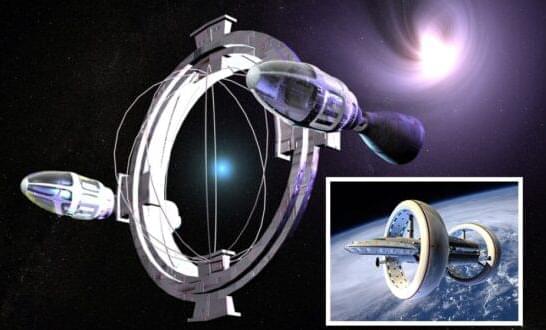Finance and investment companies as well as customers looking for more environmentally responsible portfolios have all caught the ESG bug.
Did you know that much of what we buy is built for obsolescence significantly contributing to pollution and global warming?
One of the greatest achievements of mankind is the International Space Station, which brings together astronauts from across the globe to cooperate on groundbreaking research. The International Space Station (ISS) will be decommissioned in 2024, following which a new generation of space stations will take its place. When more people are able to travel space, new political and economic conflicts will be inevitable.
Low-Earth orbit is becoming less important as NASA shifts its attention to transporting people to the moon and ultimately Mars. During this transition, the space agency plans to lease out space stations operated by private corporations for its astronauts to use. ISS will burn up and disintegrate in the atmosphere when the new stations are ready.
Anyone who wants to work in space at some time in the future will be forced to pick among a number of different locations. That implies that governments will not only be employing these new stations to improve their national space programs but also as lucrative economic endeavors, too.
SpaceX Starlink satellites twice approached the Chinese Space Station (CSS) in orbit, prompting China to warn of “close contacts” with Elon Musk’s space program.
Both the July 1 and October 21 incidents prompted the Chinese spacecraft to perform collision avoidance maneuvers. The Chinese team told the UN secretary-general in a diplomatic statement they provided earlier this month that on both occasions there were crew members on board, “which might represent a hazard to the lives or health of astronauts.”
Since its launch on April 29, the CSS “Tiangong” has maintained a nearly circular orbit at a height of around 390 kilometers with an orbital inclination of about 41.5 degrees.
It was constructed at a cost of $4 Billion and will provide the electricity needs of 14 million Egyptians.
NASA has asked the private sector to design new spacesuits that can be used on the Moon.
According to the research program’s abstract:
“The specific aim of the research program was to examine the feasibility of controlling the behavior of a dog, in an open field, by means of remotely triggered electrical stimulation of the brain. The report describes such a system which depends for its effectiveness on two properties of electrical stimulation delivered to certain deep lying structures of the dog brain: the well-known reward effect, and a tendency for such stimulation to initiate and maintain locomotion in a direction which is accompanied by the continued delivery of stimulation. Experiments on the parameters of stimulation are described, in addition to an experiment on the ability of a conventional reinforcer, food, to disrupt ongoing, free field behavior under the control of rewarding brain stimulation. Finally, supporting research employing albino rats is summarized. (Author)”
One document was released by the CIA in late 2018 after a FOIA request by The Black Vault. The document, redacted in some parts with details missing, highlighted the research of creating remote control dogs using implants on the brain. The record’s release was specifically highlighted by Newsweek, which as a result, was picked up by many other outlets.
Located in China’s Hebei province, the 3.6GW facility consists of 12 reversible pump generating sets with a capacity of 300MW each and has a power generation capacity from storage of 6.612 billion kWh.
In our everyday lives, we may take light for granted, yet for decades, the idea of measuring its attributes and overcoming its obstacles has piqued our interest. First discovered in 1,676 by Danish astronomer Ole Roemer; scientists had previously considered the speed of light was either impossible to measure or unlimited.
Light travels at a speed of 299,792 kilometers per second, which can now be readily found on the internet thanks to the work of other scientists. In 1916, Albert Einstein published his renowned theory of general relativity, in which he said, among other things, that no known object can move faster than the speed of light.
This was a significant moment in history. Attempting to break through that barrier has captivated us ever since, inspiring innumerable creative minds to try their hand at it.
Designed by scientists in Germany, the module facade has to be integrated with a building’s technical equipment. The rooms behind the facade can be supplied with solar power and at the same time heated, cooled and ventilated.
He said that three main requirements should be fulfilled to improve the cooling effect. The radiative coolers should not replace the existing PV glass covers, so the natural RC ability of glass can be harnessed to add to the overall cooling gain. There should also be an efficient and quick heat transfer mechanism between the PV module, which is also the heat source, and the RC heat sink. In addition, the RC module should directly face the sky to radiate maximum waste heat into outer space.
The proposed system consists of a PV module and a separate RC module, integrated with a flat plate heat pipe in between. A separate RC module is used along with the existing glass cover on the solar cells and the heat pipe is integrated between the PV and RC modules, providing quick heat transfer. The RC module is then placed on the condensing section of the heat pipe facing the sky.









